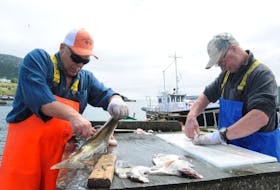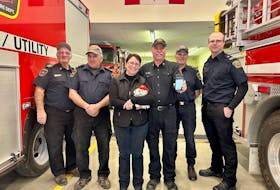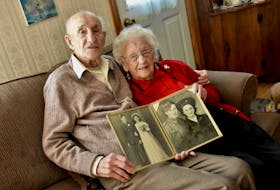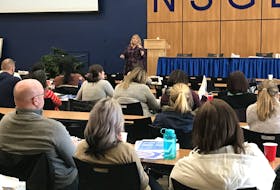TRURO, N.S. — When Mary walked through the doors of Nova Institution for Woman she faced a bleak future. A prison sentence loomed.
Then she encountered something that came unexpectedly.
“When I needed them most, there were dogs who came into my life,” she said.
Mary became involved in the Pawsitive Directions canine program, which teaches women to train dogs that come to the institution through rescues and shelters.
“I could relate to the dogs; they were being given a second opportunity at life and I felt this was a second opportunity for me. It’s been very therapeutic.
“Being able to give back is one of the biggest pieces. Each of us in here has taken something from society, and through this we can give back.”
Mary had been bitten by a dog when she was 15. She arrived at Nova with a fear of large dogs.
“Now, I understand I caused the bite by challenging the dog,” she said. “I’ve completely overcome my fear and I’ve worked with several dogs.
“I had the opportunity to work with dogs who became well-trained pets, one that became a therapy dog, and two who became service dogs.”
Cathie Bell, a certified professional dog trainer, is the instructor with the Pawsitive Directions program.
“This isn’t a normal living environment and there’s a lot here that can cause stress,” she said. "Dogs are a bridge between the women; they break down barriers that might otherwise not be broken down. The women see this as a safe place.
“The dogs teach them it’s OK if a plan fails; just go back and make a new plan. The women do have to follow rules and do the work. Some of them come in thinking it’s all fun and games, and they leave.”
She said there are often a lot of tears when a dog leaves for a new home. She tries to help the women focus on what they’ve done to help the dog adapt successfully to a new life.
“We get a lot of emotional support from Cathie and the other women in the program,” said Mary. “We try to work as a team and encourage one another.
“It can be quite an emotional roller coaster. We have advance notice when a dog’s leaving, but it’s still hard. One came as a pup that could fit in my hand. She was seven or eight months old when she left, and I was very attached to her. It felt like a child being ripped away to have her leave.”
Working with dogs helped her learn to set boundaries and let go in a healthy manner. It also built her self-esteem and confidence.
“Working with dogs, you have to observe and learn to break things down and problem-solve,” she said.
“It’s a great way to learn emotion management. It helped me label emotions correctly and to learn to listen to my gut instincts again.
“When you’re having off days and the dog just stares, it’s because they know something is wrong.”
As Mary progressed in the program, she became an assistant to Cathie, taking on more responsibility.
“She is very dedicated," said Cathie, "and it got to the point where I had a lot of confidence in her."
Laurie Bernard, assistant warden management services, has also seen positive change in Mary.
“She became someone we could rely on and she became a contact person on site,” she said. “She provides lots of support to other women.”
She saw Mary go from a woman who was afraid of asserting herself to someone with the confidence to speak up when she felt it was important.
“She asked me not to pet a dog until it was seated, and that was very good.
“There are a lot of transferable skills the women learn in this program. They’re skills that, if people don’t have them, it can lead them back here. I also see the calming effect; the dogs have a calming effect."
She noted that being involved in the canine program often leads to positive behaviour in other areas because women are being careful not to lose the privilege of being with the dogs.
“I’ve taken full advantage of the program and what it offers,” said Mary. “It’s helped me become a better person in many ways.”
She will soon have the opportunity to build a new life for herself. It's a life that's sure to include dogs.
-
Pawsitive Directions phases
Phase 1: Women work with dogs in class and walk them outside. This phase usually lasts about three months. The women are sometimes given the responsibility of caring for a guinea pig.
Phase 2: Women are given the opportunity to have a dog with them full time, caring for all of the animal’s needs. If the woman is busy with other things, she can place the dog in a crate in her room. This phase usually lasts six months to a year
Phase 3: This phase is geared toward service dog training.
Mary completed all three phases.
-
Chickens and a guinea pig have their roles
– Cathie Bell brought in a couple of chickens for some of the women to train. Working with the birds improved timing and reinforcement. If there’s not enough reinforcement, or timing is off, the trainer will lose the chicken’s attention.
– The birds were taught to peck at specific coloured dots and certain shapes on cue and to knock over obstacles in a particular order.
– When the training program was complete, they were placed in a home to be pets.
– A guinea pig who resides at Nova Institution has also been taught to do tricks. The rodent will shake a paw, twist, go up on his hind legs, and complete a small course that includes pylons and a jump.








